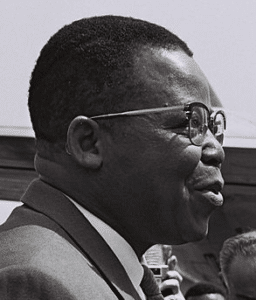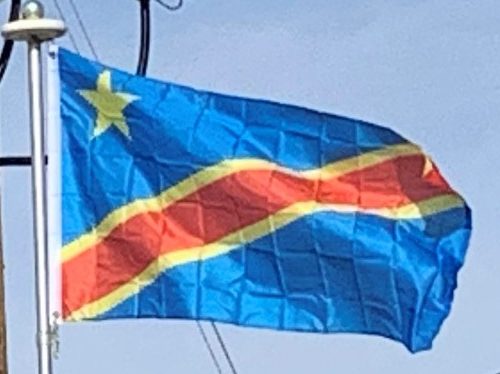The Belgian Congo was directly involved in the two world wars. During World War I (1914–1918), an initial stand-off between the Force Publique and the German colonial army in German East Africa (Tanganyika) turned into open warfare with a joint Anglo-Belgian invasion of German colonial territory in 1916 and 1917 during the East African Campaign. The Force Publique gained a notable victory when it marched into Tabora in September 1916 under the command of General Charles Tombeur after heavy fighting.
After 1918, Belgium was rewarded for the participation of the Force Publique in the East African campaign with a League of Nations mandate over the previously German colony of Ruanda-Urundi. During World War II, the Belgian Congo provided a crucial source of income for the Belgian government-in-exile in London, and the Force Publique again participated in Allied campaigns in Africa. Belgian Congolese forces under the command of Belgian officers notably fought against the Italian colonial army in Ethiopia in Asosa, Bortaï and Saïo under Major-General Auguste-Eduard Gilliaert during the second East African Campaign.
Independence and Political Crisis (1960–65):
In May 1960, a growing nationalist movement, the Mouvement National Congolais (MNC) led by Patrice Lumumba, won the parliamentary elections. Patrice Lumumba thus became the first Prime Minister of the Democratic Republic of the Congo, then known as the Republic of the Congo, on 24 June 1960. The parliament elected Joseph Kasavubu as President, of the Alliance des Bakongo (ABAKO) party. Other parties that emerged included the Parti Solidaire Africain (PSA) led by Antoine Gizenga, and the Parti National du Peuple (PNP) led by Albert Delvaux and Laurent Mbariko.

The Belgian Congo achieved independence on 30 June 1960 under the name “République du Congo” (“Republic of Congo” or “Republic of the Congo” in English). As the neighboring French colony of Middle Congo (Moyen Congo) also chose the name “Republic of Congo” upon achieving its independence, the two countries were more commonly known as “Congo-Léopoldville” and “Congo-Brazzaville”, after their capital cities.
Shortly after independence the Force Publique mutinied, and on 11 July the province of Katanga (led by Moïse Tshombe) and South Kasai engaged in secessionist struggles against the new leadership. Most of the 100,000 Europeans who had remained behind after independence fled the country, opening the way for Congolese to replace the European military and administrative elite. On 5 September 1960, Kasavubu dismissed Lumumba from office. Lumumba declared Kasavubu’s action unconstitutional and a crisis between the two leaders developed.
Events set in motion by the U.S. and Belgium on 14 September removed Lumumba from office with forces loyal to Joseph Mobutu. On 17 January 1961, he was handed over to Katangan authorities and executed by Belgian-led Katangese troops. An investigation by the Belgium’s Parliament in 2001 found Belgium “morally responsible” for the murder of Lumumba, and the country has since officially apologized for its role in his death.
Amidst widespread confusion and chaos, a temporary government was led by technicians (the Collège des commissaires généraux). The secession ended in January 1963 with the assistance of UN forces. Several short-lived governments, of Joseph Ileo, Cyrille Adoula and Moise Tshombe, took over in quick succession.
